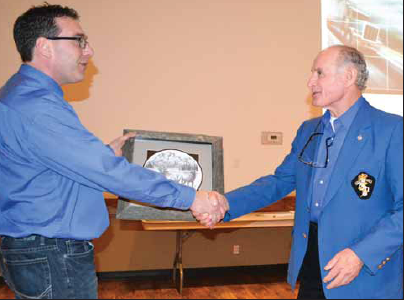Lloydminster โ An ounce of prevention is worth a pound of cure.
Keep that adage in mind when expensive oilfield equipment or components break down during this current low oil price environment. A cost-effective
solution is to send the failed part to the lubricant testing division of Agat Laboratories in Calgary for scanning electron microscopy (SEM) analysis.
SEM can assist maintenance and engineering personnel in determining the root cause of failure in oilfield plant and mobile machinery.
Testing is free to lubricant testing members and about $1,500 for non members and it can prevent costly repairs and downtime for oil and gas companies.
โA failure might cause $800,000 of damage so if that failure recurs then thereโs another $800,000 worth of failure,โ said Lloyd
Leugner Agatโs director of equipment reliability and lubricant testing services.
โSo they should definitely be prepared to analyze every failure they have so that they can prevent a recurrence of that failure.โ
The advantages of SEM and how it works were covered in Leugnerโs presentation and handouts at the January technical lunch of the Lloydminster Society of
Petroleum Engineers.
He told the audience that the diagnosis of machinery failure starts with analyzing a small sample of the failed component under the scanning electron
microscope.
Samples could include a cut out piece of a sleeve bearing, a piston ring or a rotating element bearing. โWeโre testing any machine failure,โ said
Leugner.
Any mechanical component that uses grease or oil to lubricate it can be analyzed with SEM. The SEM scans the surface of the sample at high magnification to
determine failure types such as abrasions, adhesion, erosion, corrosion and cavitation.
SEM provides a 3D image of the sample through the use of secondary electrons that are generated by the sample after ะกภถสำฦต bombarded with
electrons.
An elemental analysis can also be performed using an X-ray Energy Spectroscopy attachment. X-ray diffraction can be used to support conclusions such as
foreign deposits on pistons, mechanical seals, gears or components to be evaluated for the elements identified within.
โWe are testing for the elements; we are testing for the cause of the failure; and weโre analyzing how the elemental analyses actually created the failure of
the component itself,โ explained Leugner who noted each case is different.
โโTheyโre not all the same. It depends on the elemental analysis. It depends on the causes of the failure. It depends on the type of contaminants and so on
that actually created the failure.โ He said a preventive maintenance combined with a predictive maintenance is essential in providing initial information on the potential
causes of failure or the beginnings of the cause of those failures.
โThat way you can do something about it before the machine actually fails,โ he said. Leugner was introduced as a former military tank and heavy truck mechanic
in the Royal Canadian Electrical Mechanical Engineers with over 50 years of experience with lubricants and equipment.
He ran his own company called Maintenance Technology International for over 30 years up until 2007.
โI retired for five years and found retirement much to my disliking, so I went back to work for Agat two years ago,โ he said with his 74th birthday coming up
in March.
Leugner also listed as a co-author of The Practical Handbook of Machinery Lubrication who knows what kinds of things cause failures. โSeventy per cent
of lubrication failures in industrial machinery are caused by contaminated oil,โ he said.
โThatโs an amazing percentage, but thatโs what generally are the causes of failures.โ He also said operational actions will cause failures as well as overloading
and running machinery at excessive speeds.
โBut primarily they are caused by operational conditions such as contamination โ excessive amounts of water and so on,โ he said. There are several
examples of that in the handout material. Leugner said there is no time like the present for SEM testing especially during a downturn when companies are looking at cost
efficiencies.
โThey might pay more attention now to their failures than they might have six or eight months ago. If they can prevent those things from occurring, $40 oil
is not that bad,โ he said. โIf they are not paying attention to those failures and theyโre still having them, then $40 oil is a problem.โ
Lloydminster companies with failed machinery can take the parts to Agatโs local environmental lab that will ship them to Calgary for a SEM
analysis. Mark White, a district business development rep from Edmonton was on hand to explain his role at Agat in Lloydminster.
โI am usually here once every couple of weeks. My focus is oil and gas so I provide petrochemical analysis of hydrocarbons,โ he said noting they are
busy.
โCompanies are mandated to have their oil tested to see whatโs in it and to grade it. Pipelines want to know if itโs corrosive before itโs piped through the
pipelines or by rail or byย truck.
โSome companies also want MSDS sheets done up for what theyโre carrying, so we do that as well, but itโs a full scale of hydrocarbon analysis of heavy
crude oil thatโs coming out of this area or gas as well.โ
The Agat environmental lab in Lloydminsterย also provides air testing services.




